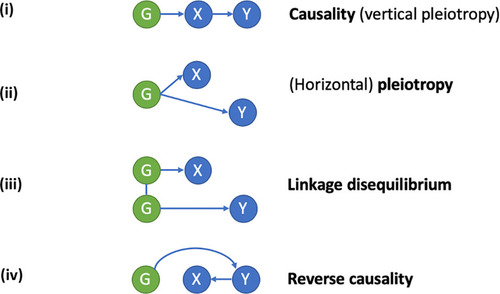- Title
-
Opportunities and Challenges in Functional Genomics Research in Osteoporosis: Report From a Workshop Held by the Causes Working Group of the Osteoporosis and Bone Research Academy of the Royal Osteoporosis Society on October 5th 2020
- Authors
- Tobias, J.H., Duncan, E.L., Kague, E., Hammond, C.L., Gregson, C.L., Bassett, D., Williams, G.R., Min, J.L., Gaunt, T.R., Karasik, D., Ohlsson, C., Rivadeneira, F., Edwards, J.R., Hannan, F.M., Kemp, J.P., Gilbert, S.J., Alonso, N., Hassan, N., Compston, J.E., Ralston, S.H.
- Source
- Full text @ Front Endocrinol (Lausanne)
|
Applying a Mendelian randomization (MR) framework to study causal inferences in “omics” data. In conventional MR, a genetic instrument (G) is used as a proxy for an exposure (X), to study its relationship with a disease outcome (Y). A causal relationship of X on Y exists, if G is related to Y |

